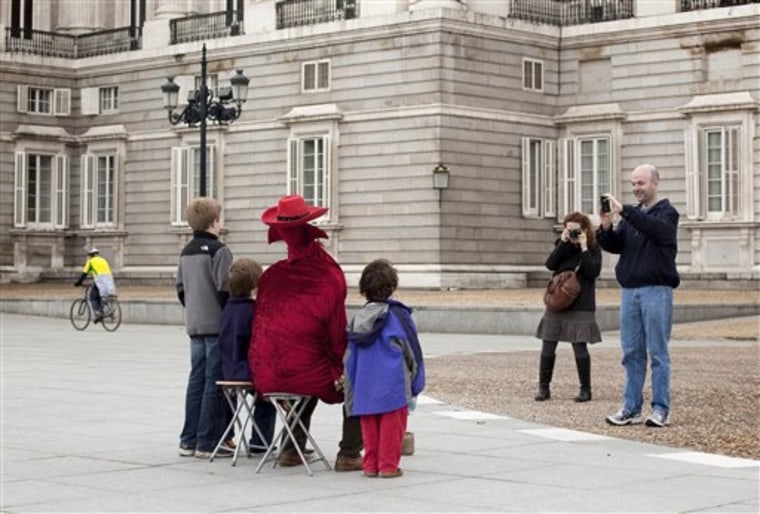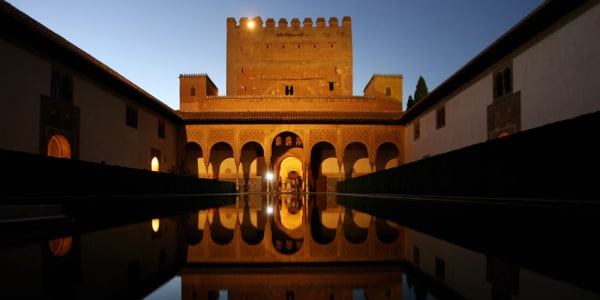Unemployment stands at a staggering 20 percent in Spain, and no one is predicting the economic boom that Madrid enjoyed just two years ago will return anytime soon. Still, tourists visiting one of Europe's most breathtaking cities this summer will have to do some homework to find bargains.
Booking ahead for hotels is crucial because unrest in North African countries such as Egypt and Tunisia has prompted many European tourists to change plans and head for the sun and safety of Spain instead. That means the country isn't in any danger of losing its reputation as the world's fourth biggest tourist destination.
On top of that, many Spaniards are expected stay at home this year rather than pay to fly overseas on vacation.
That said, there are plenty of bargains to be had in Madrid, and the best thing is that they revolve around Spain's famed food and culture. You just have to do it the way the Spaniards do. That means eating later than usual, going just a few steps off the beaten tourist path for tapas, and timing visits to key points of interest.
Any Spaniard will tell you eating out is one of the great pleasures of life, a sublime ritual that traditionally marries regionally-sourced food with great wine.
The same goes for France and Italy, but you can generally do it cheaper in Spain, if you go local and have lunch around 2 p.m., or take advantage of the freebie appetizers over drinks offered in many bars.
Restaurants across Madrid and throughout Spain have placards outside their doors offering the "menu del dia," or meal of the day which applies only to lunch. It includes two main courses, dessert and a drink — usually wine, beer or water, or the summer favorite "tinto de verano," which is red wine with slightly sweetened seltzer water.
The total price is usually between 10 and 15 euros ($14-$21), but many restaurants don't start serving meals until 2 p.m. or so. Forget about getting the meal of the day at noon.
Besides price, the advantage is that the meals offer a great way to sample a wide variety of traditional Spanish food, and paella is frequently served as the first or second course.
Spain's bars galore are famed for their tapas, but many also offer free mini-tapas with a drink in a combination called "aperitivos" (appetizers). The standing rule is that if you order a glass of wine or beer, or a soda, the bartender gives you a little snack to accompany the drink. You just don't get to pick.
Slideshow 18 photos
The more drinks you order, the more you get, and bartenders will usually vary from one aperitivo to the next to give you a variety. Best to hit the bars where the crowd looks mostly if not all Spanish. The bonus this year is that Spain's bars and restaurants have gone smoke-free, except for outside terraces.
Bars don't say whether they give them or not, and bartenders might forget, but the best way to find out is just to say "Hay aperitivos con tapa?" ("Do you serve appetizers with tapa?"). If they say no, you're relegated to ordering tapas. But if they do — and you're not too hungry — you might be able to fill up just on the cost of the drinks.
For breakfast, don't order the coffee and the pastry you see in glass cases. Ask for the "desayuno" (breakfast) instead, and you'll get freshly squeezed orange juice, strong coffee and toast with butter and jam. Usually about 3 euros ($4.25).
Most tourists head to Plaza Mayor in the heart of Madrid, a monumental 15th-century cobblestoned square that has witnessed everything from bullfights to hair-raising Inquisition trials. All along its edges are restaurants offering tempting fare, but it's best to just soak in the atmosphere of the plaza and head to the nearby side streets to eat.
At the southwestern corner of the square is an arch with stone steps leading down to Los Cuchilleros and then Cava Baja streets. All along this southward route you will find some of the most well-attended restaurants in Spain, serving everything from traditional recipes — try Casa Lucio, one of the oldest restaurants in Europe — to modern tapas. And all at much better prices than in the tourist-trap plaza.
One of Madrid's priciest hotels has a great deal for those who can't afford rooms starting at 265 euros ($327) a night.
Deep inside, beyond the luxurious lobby, is the main bar of the Palace, set under a magnificent art nouveau stained-glass dome. Commissioned by King Alfonso XIII in 1912, this is a regally elegant place to meet, and ordering a glass of Cava sparkling wine — served by waiters in tailcoats and white gloves — can be a perfect way to start an evening for the relatively modest sum of 12.20 euros ($17.20). Live piano music and celebrity-watching are included, but don't wear sneakers, shorts and a T-shirt.
Tourists looking for inexpensive hostels (known as "hostals" or "pensiones") that charge as little as 30 euros ($42) a night for a double room, can find them in Madrid or outside the city in locations such as the town of Guadarrama.
Madrid also boasts four of Europe's most important museums: the Prado, Reina Sofia, Thyssen-Bornemisza and Caixa Forum. But timing is key, so make sure you don't take too long of a siesta after your long lunch.
The Prado — boasting masterpieces by Fra Angelico, Diego de Velazquez, El Greco, Francisco de Goya — charges no admission Tuesday through Saturday from 6 p.m. to 8 p.m., and from 5 p.m. to 8 p.m. on Sunday. This year it will feature "Treasures from the Hermitage," a rare opportunity to see masterpieces outside of their famous Russian home.
The Reina Sofia — home to Pablo Picasso's "Guernica" — lets anyone in free Monday to Friday from 7 p.m.-9 p.m., Saturdays from 2:30 p.m.-9 p.m. and Sundays from 10 a.m. to 2:30 p.m.
Located within the central Retiro park are three smaller, more intimate museums. Palacio de Cristal and Palacio de Velazquez are linked to the Reina Sofia and often have free exhibitions, while Casa de Vacas at the northern end also holds free exhibitions.
Those wishing to follow in the footsteps of author Ernest Hemingway don't have to go to a bullfight in Madrid's famed Las Ventas bullring — shelling out for a ticket in the shade can be quite pricey. The building itself is a stunning example of Moorish influence on Spanish architecture, and people can enjoy a 40-minute guided tour in English — including a beginner's lesson in how to hold cape and sword — Tuesday to Sunday at 10 a.m., or 1:30 p.m. for 6 euros ($8.50).
Just outside the ring is a statue of a matador taking his hat off to a bust of Alexander Fleming, a tribute to the discoverer of penicillin. Before its discovery, bullfighters were often doomed to death by infection after gorings.
While Madrid's taxis are certainly cheaper than cabs in cities such as London, the best way to get around is on the city's extensive public transport system. A tourist travel pass allowing unlimited bus and subway rides costs 5.20 euros ($7.30) a day or 23.60 euros ($33.25) a week.
The adventurous can shell out a little more for public transport and head to the Guadarrama Mountains looming near the city. The peaks are topped with snow during the winter months, but offer relief from Madrid's scorching heat during the summer, amid the smells of wild lavender and rosemary growing on the slopes.
Some like to stay past sunset, then rush to take the last commuter train back to Madrid.
"From here at night," said Singaporean tourist Melvyn Tan, "Madrid looks like a chest of jewels shining in the darkness."

